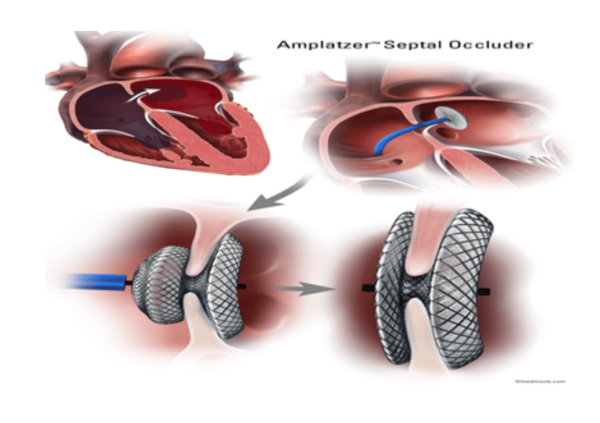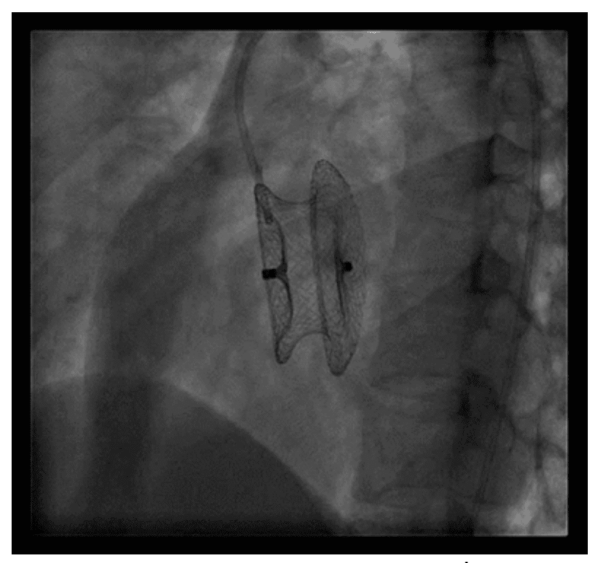Knowing the warning signs and symptoms of congenital atrial septal defect (ASD)

The statistical data reveals that the average incidence rate of congenital heart defects reported in different studies is 1 up to 8 per 1,000 live births. An atrial septal defect (ASD) is defined as a hole in the wall between the two upper chambers of the heart (atria). The condition might present in newborns (congenital defects) and adults. This disease in female babies has doubled in prevalence compared to male ones. Small defects may never manifest signs and symptoms. It may be found incidentally during check-ups. In adults, signs or symptoms may begin when reaching certain age. Related manifestations include shortness of breath, tiring easily especially after activity and heart palpitations. If left untreated, heart palpitation potentially lead to fatal conditions such as heart rhythm abnormalities (arrhythmias) and heart failure.
Being aware of warning symptoms and having regular heart check-ups remain essentially important. If atrial septal defect is detected, it can be effectively and safely treated by transcatheter closure, a less invasive procedure to close the hole with fewer complications and a quick recover.
Get to know congenital atrial septal defect (ASD)
An atrial septal defect (ASD) is a hole in the septum which is the muscular wall that separates the heart’s two upper chambers (atria). An atrial septal defect can be a congenital defect that happens when the septum does not form properly during pregnancy. As a result, an atrial septal defect allows freshly oxygenated blood (received from the lung) to flow from the left upper chamber (left atrium) into the right upper chamber of the heart (right atrium). Therefore, oxygenated blood mixes with deoxygenated blood and it is subsequently pumped to the lungs, even though it is already refreshed with oxygen. If the atrial septal defect is large, this extra blood volume can overfill the lungs and overwork the right side of the heart. If left treated, the right side of the heart eventually enlarges and weakens. If this process progresses, the blood pressure in the lungs may increase, leading to pulmonary hypertension.
Four warning signs and symptoms of congenital atrial septal defect
- Shortness of breath
- Being tired easily especially after activity
- Heart palpitations or skipped beats
- Peripheral gangrene with the presence of a grayish-blue or purple color of skin e.g. hands and feet.
In adult cases, patients typically exhibit cardiovascular symptoms including shortness of breath and palpitation. In some cases, embolic stroke can be induced by the formation of a blood clot (emboli) in the right atrium passing to the left atrium through the hole. The blood clot is then swept through blood circulation to lodge in the brain arteries. In addition, if the holes are large, it results in increased pressure in the lung and leads to related manifestations e.g. tiring and a grayish-blue or purple color of lips, hands and feet. If left untreated, it might potentially cause life-threatening conditions.
Diagnosis of atrial septal defect
Tests and procedures to diagnose atrial septal defect include listening to the heart using a stethoscope and echocardiogram. During echocardiogram (figure 1), sound waves are used to produce a video image of the heart. It allows the cardiologists to view heart’s chambers and measure their pumping strength. There are 2 common types of echocardiogram; transthoracic echocardiogram and transesophageal echocardiogram. During performing transthoracic echocardiogram, the probe (or ultrasonic transducer) is placed on the chest or abdomen of the patient to get various views of the heart. However in patients with thick chest wall or abnormal anatomy of chest wall, transesophageal echocardiogram using specialized probe into the patient’s esophagus behind the windpipe (trachea) and heart might be more suitable. Moving images of the heart can be viewed, allowing cardiologists to diagnosed accurately.


(figure 1)
Treatment of secundum atrial septal defect
Atrial septal defects can be categorized into several types. Secundum atrial septal defect is the most common type, accounts for 75% of all cases. The hole of secundum atrial septal defect occurs in the middle of the wall between the atria (atrial septum). Small atrial septal defects might close on their own but it is fairly rare. If small atrial septal defects do not cause any problems, they may not require any treatment. But many persistent atrial septal defects eventually require treatments to be corrected. If the size of the hole is between 1 cm. to 3.6 cm. (large sized), presented in figure 2, immediate medical attention provided by highly experienced cardiologists must be sought. Effective treatment option is “transcatheter ASD closure” which is a less invasive procedure to close the wholes with fewer complications and a quicker recovery time.

(figure 2)
In transcatheter ASD closure procedure, an interventional cardiologist inserts a thin tube (catheter) into a blood vessel in the groin and guide it to the heart using imaging techniques. Through the catheter, a mesh patch or plug is placed to close the hole. The heart tissue grows around the mesh, permanently sealing the hole within 3-6 months. Treatment time takes 30 minutes up to an hour. Chosen material to close the holes entirely depends on the characteristic and size of the holes. In comparison to open surgery, advantages of transcatheter ASD closure include no need for general anesthesia, smaller incisions, less pain, fewer complications and faster recovery time which is typically within 48 hours. As a result, patients can quickly return to their daily life and activities. After receiving treatment, close follow-ups by echocardiogram are required as scheduled; before discharge, every month, 6 months and 1 year. And all medical advices given by cardiologists must be strictly followed.

(figure 3)
Transcatheter ASD closure procedure has shown up to 98% treatment success rate with less than 2% of complications. After treatment, patients will be strictly advised on special care and precautions including:
- Avoid lifting heavy weight at least 1 month;
- Avoid physical activities that need exertion during the first 3 months;
- Anti-platelets will be prescribed for 3-6 months;
- Contraception in female patients in reproductive age group; and
- Taking antibiotic drugs to prevent infective endocarditis (prophylaxis) during the first 6 months.
“Charity project of Bangkok Heart Hospital to treat patients with congenital ASD by using transcatheter ASD closure procedure”
The Vejdusit Foundation, a charitable organization of Bangkok Dusit Medical Services PLC –BDMS in collaboration with Bangkok Heart Hospital has established charity project –a CSR activity to treat underprivileged patients with congenital ASD by using transcatheter ASD closure procedure. Fourteen suitable candidates are selected based on their disease characteristics. Treatments will be provided without charge. The inclusion criteria includes patients with financial constraint who have been waiting for treatment from other government hospitals for a long time. Patients who require this treatment can check for more information and they can be enrolled if they fit the criteria via Tel. +6689-814-7064. This CSR activity has started in September 2019 and seven patients have received this treatment successfully.
Nevertheless, selected treatment option is primarily determined by size, location and type of the holes as well as individual’s conditions. Transcatheter ASD closure might not be suitable for some atrial septal defects with complicated conditions e.g. large hole (larger than 36 mm.) and several holes with hole borders are smaller than 5 mm or in patients presenting with other heart diseases e.g. heart valve regurgitation. These conditions may require open-heart surgery as the first-line treatment.
To achieve the best possible outcomes derived from transcatheter ASD closure, highly experienced and trained interventional cardiologists supported by cutting-edge technology and well-equipped catheterization room are crucially vital. In addition, transcatheter ASD closure with ASD occluder device results in high success rates with fewer complications.

